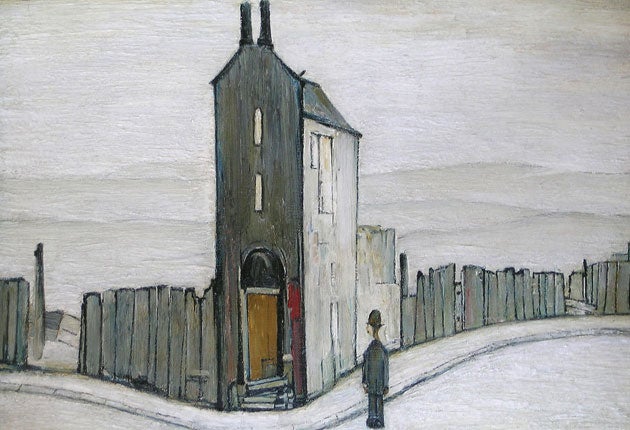The Loneliness of Lowry, Abbot Hall Gallery, Kendal
Hidden depths of a quiet master

It is perfectly respectable to dislike LS Lowry intensely. He is far too popular with the general public for his own good. Many of his works seem to be deft caricatures of works by LS Lowry. He seems too set apart from the main currents of artistic development in the 20th century. His painting can look a bit ham-fisted, if not naïve.
In short, he is everyman's slightly amateurish, eccentric Sunday painter, isn't he? What's more, wasn't he a rent collector for most of his life, with painting set a bit to the side – until he took retirement, quite late, and then flung himself at it for his remaining 20-odd years? In short, wasn't he, for the most part, a bit of a regional hobbyist?
Not really, and this new show at the Abbot Hall Gallery in Kendal, in Cumbria, helps to show us why. The setting is appropriate. Lowry, who was not a great traveller, painted these glooming hills and these flung-down lakes. That in itself is interesting because we tend to think of Lowry as an urban painter, a painter of regimented little pram pushers, moving very hurriedly at cross purposes amidst the smokestacked urban dereliction of Salford, his home town. Yes, there is more to Lowry than that.
These landscapes are very engaging for various reasons. The elemental part, for example. There is not a single blue sky anywhere in this show. Lowry wouldn't have known where to look if you'd shipped him off to the Mediterranean. His skies are usually a kind of muddy cream. They hang heavy as a pauper's sigh. They are made of sour milk, the sort of unloved stuff that goes globbing down the drain.
There are no people in these landscapes. The billiard-table-green hills hump like slightly rakishly audacious, curvaceous organic forms – it's the nearest that Lowry ever gets, publicly, to sex. The fingery lakes have an oddly splashy glare to them, in spite of the fact that there is no sun. Where is all this reflected light coming from? All very ominous. When there is a house it looks horribly isolated, as if it's at the dead end of the twisty, bendy road to the village of Nowhere. Like the rest of the show, the landscapes – like the seascapes that we can see in the last of the four galleries – are about emptiness, solitariness.
The seascapes remind you just a tad of the sea in films by Ingmar Bergman. There is no hope here. The sea is a chilly, sullen and unfathomable no-place, often ruled by a sullen, pinky light. Now and again a bit of a ship hoves into view but these ships, we feel, could so easily be engulfed or shrugged aside.
Is Lowry a colourist? Is that some kind of a joke? In fact, he can use colour with great and telling subtlety. Look at Coal Barge on a Canal, for example, from 1946. The foreground is occupied by the solid, brutish presence of a barge. But just look at how he has lit those terraced houses in the background of the painting. Why, if you didn't want to push the boat out too far, you could almost call it a note of sunny optimism.
To 30 October (01539 722464, Abbothall.org.uk)
Subscribe to Independent Premium to bookmark this article
Want to bookmark your favourite articles and stories to read or reference later? Start your Independent Premium subscription today.

Join our commenting forum
Join thought-provoking conversations, follow other Independent readers and see their replies